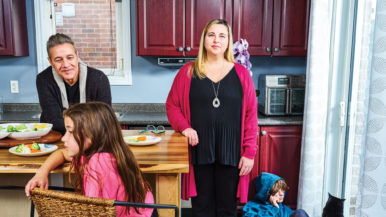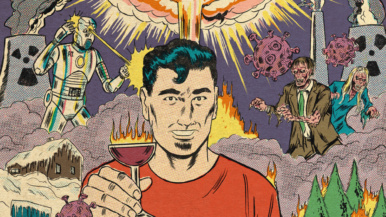Will we finally get a high-frequency train from Toronto to Quebec City? A Q&A with Robert Prichard, the guy who’s promising to make it happen
Prichard has led a bank, a newspaper and a university. His latest mission: to launch VIA’s high-frequency rail from southern Ontario to Quebec

World-class rail between Ontario and Quebec has always felt out of reach. As chair of the new VIA high-frequency service, how will you make it happen?
The time has come for this project. We have strong support from the federal government, we have population growth, and roads are only getting more congested. The concern around climate is also paramount, and rail travel is a great alternative to cars and planes—especially when it’s efficient.
On a scale from The Little Engine That Could to Bullet Train, how fast are we talking?
To be clear, we’re moving forward with high-frequency rail (HFR) as opposed to high-speed rail. Our thesis is that providing more service and laying new track will end the delays that have plagued the Toronto–Quebec corridor. That means a much shorter commute. In terms of speed, we really don’t know yet. Faster is better but more expensive, so that is a trade-off we are considering.
Europe and Asia have great rail transit. Why is our system still so crappy?
In Canada, rail lines are owned by the freight companies, so passenger trains don’t get priority. When you’re stuck in the middle of the country for half an hour, that’s usually the reason. So we’re adding 1,000 kilometres of track. The idea is that, on any given day, you can head down to Union Station and there will always be a train leaving within the hour.
Related: This teenage urban planning prodigy designed a fantasy map of the TTC
You’re seeking a private partner for the project. How’s that going?
We’re in the process of selecting up to three candidates to submit proposals, which will include details on the types of trains, their speeds and so on.
What do you say to critics who see this as a step toward privatizing a national service?
I think we all want the same thing—good service—and partnering with the private sector is the best way to deliver that. Of course, it’s important that we respect the union rights of VIA’s public-sector employees, but this is not an undertaking that makes sense as either just public or just private. We don’t have the exact budget yet, but we know it’s going to be major.
Minister of Transport Omar Alghabra estimates that it could be close to $12 billion.
That may sound like a big number today, but it will be amortized over literally 100 years.
Won’t we all be flying from Toronto to Montreal with our jetpacks by then?
We were on trains 100 years ago, and I think we’ll be on trains 100 years from now. How those trains will be propelled is the question. Will they be electric? That is a possibility for our current vision of HFR. Will they be powered by hydrogen? That I don’t know. But I do think that better connecting these major cities by train is a pearl beyond price.
Related: Seven of Toronto’s most high-tech, sustainable and exciting new residential real estate developments
Why do you think you were hired as chair of VIA HFR?
For a few reasons: I was the inaugural CEO of Metrolinx, and then I spent another eight years there as chair. We helped make Toronto transit more efficient and more accessible. And I have plenty of experience in the public sector.
But I once saw you described as “the poster child of corporate Canada.”
I read that same article, and I thought, How utterly ridiculous. I spent the first 25 years of my career as a professor of law at U of T and then as the school’s president. I was chair of SickKids. I’ve enjoyed my corporate work, but as I get older, I’m more interested in being part of projects that give back.
You’re in your 70s. Have you considered retirement?
People retire so they can do what they love, and I love what I’m doing now. When I’m not working, I spend time with my family. We have a farm just outside of Uxbridge. Unfortunately, GO trains don’t reach there yet, despite nine years of effort on my part.
Do you remember your first train ride?
It was with my mother and my sisters when we immigrated to Canada from the UK in 1952. The ship landed in Montreal, and then we took the train to Toronto. But I think I only remember it because we have a photo from the trip.
Transit projects are notoriously slow and often delayed. Can you guarantee the 10-year timeline?
We have every intention of getting it done in 10 years. In the meantime, VIA is adding new trains and more service to begin the transformation.
This interview has been edited for length and clarity.





